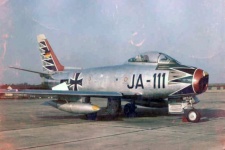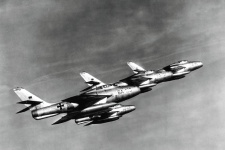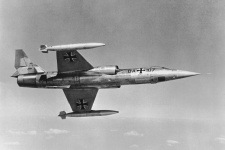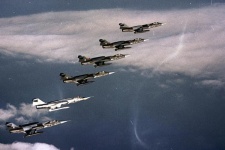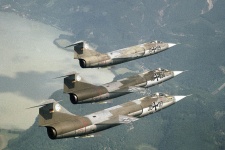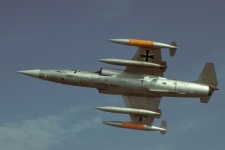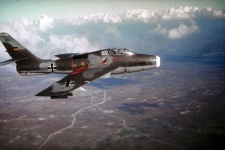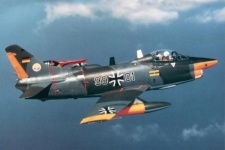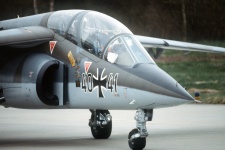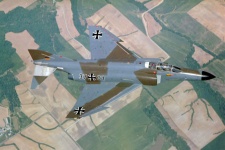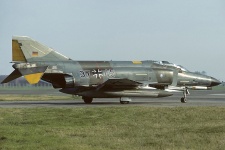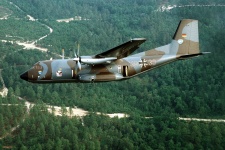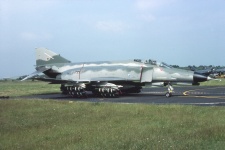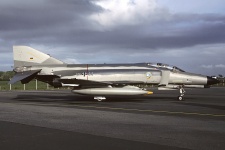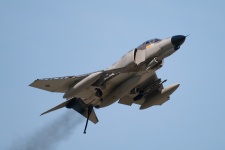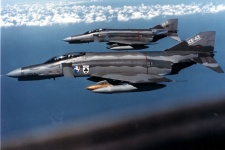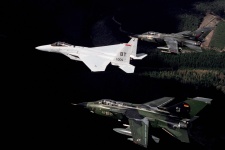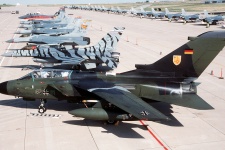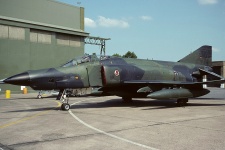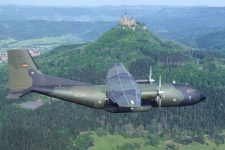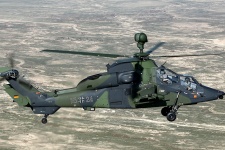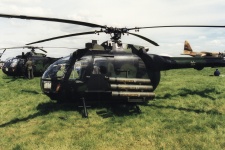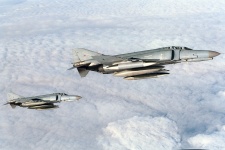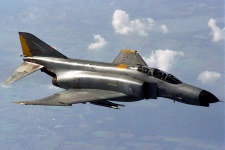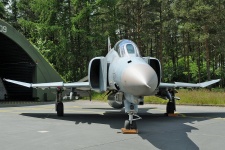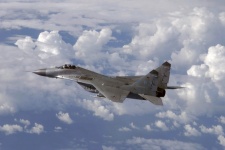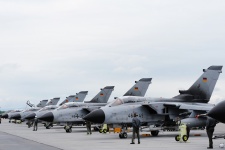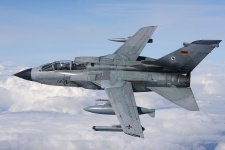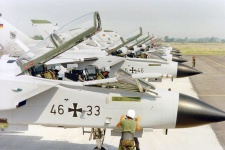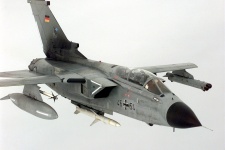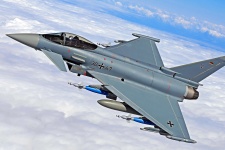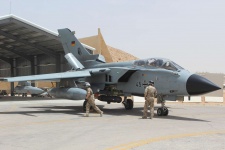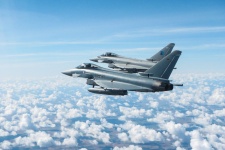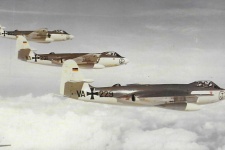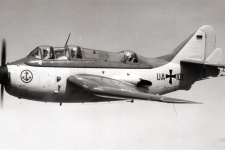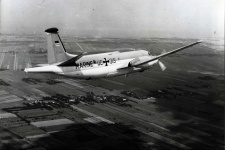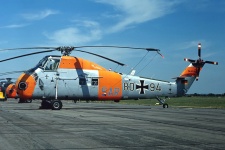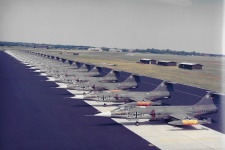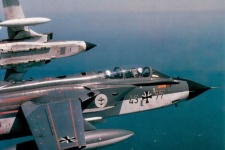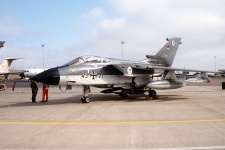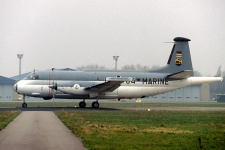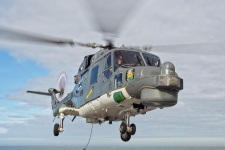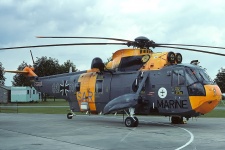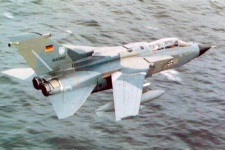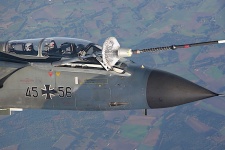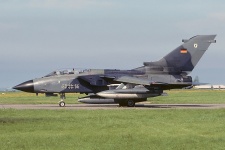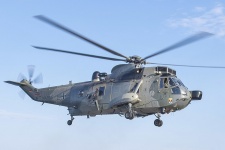Aircraft Colors and Camouflage, Luftwaffe and Marineflieger (Modern)
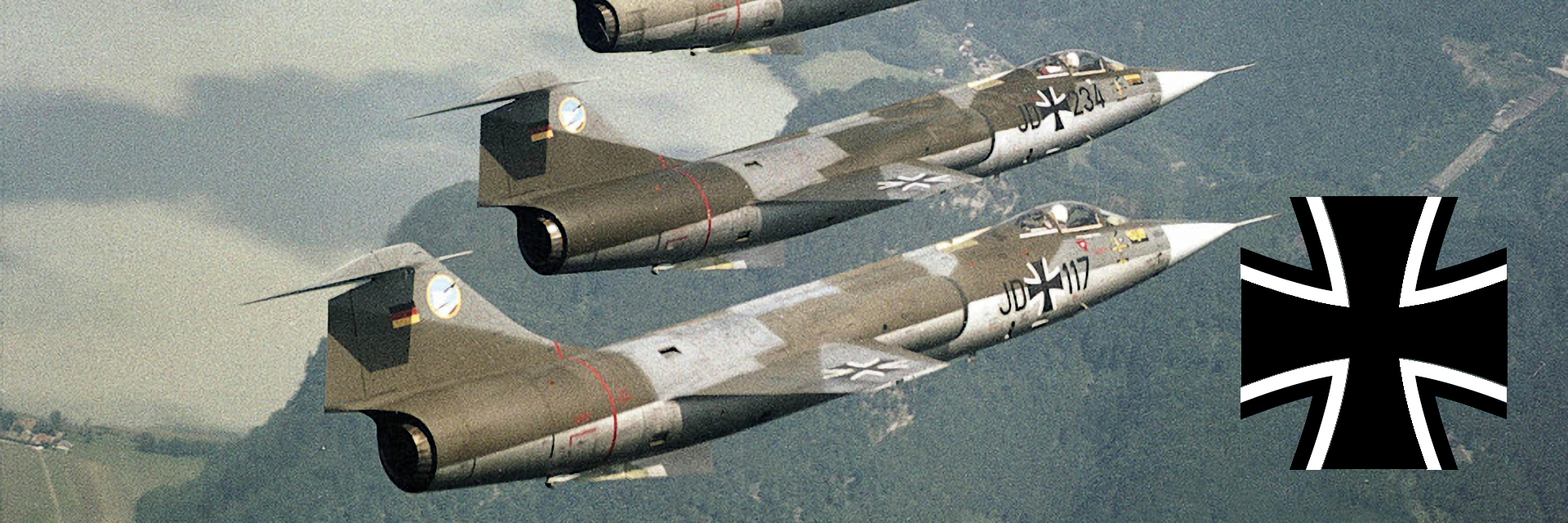
![]()
Introduction to German color standards for modern aircraft
The main color standard used in Germany was conceived in 1927 by the Reichs-Ausschuß für Lieferbedingungen (the National Committee for Delivery and Quality Assurance) and introduced as RAL 840. An initial revision took place in 1932 resulting in RAL 840 B 2, a 40 color palette which would include all the colors in use by the Wehrmacht at the start of the war. A further revision known as RAL 840 R was introduced in 1939-40 and replaced the original single- or double-digit numbering with the now standard four-color nomenclature where the first digit indicates the hue, these being yellow (1), orange (2), red (3), violet (4), blue (5), green (6), gray (7), brown (8), and white and black (9). The remaining digits represent each individual shade and are added chronologically. The RAL system was used by all of the Wehrmacht's ground forces which included the Heer (Army) and the Luftwaffe (Air Force) as well as the separate Schutzstaffel (SS), Luftwaffe aircraft adopted a separate color standard known RLM (named after the Ministry of Aviation or Reichsluftfahrtministerium). Responsibility for Wehrmacht camouflage rested on the Oberkommando des Heeres (OKH), the Army high command.
It was customary to add new colors to the palette, and these were eventually standardized in 1961 into a new palette known as RAL 840-HR with 210 colors and which is the current standard in use to this day. Notably, numerous wartime colors including widely used ones like RAL 7028 Dunkelgelb were not incorporated. The absence of different sheens in the standard palette (all colors in RAL 840-HR are matt) resulted in the introduction of RAL 841-GL in 1986 which was composed of 193 gloss colors. Around this time, numerous other complementary palettes for design purposes were introduced resulting in the RAL 840 palette now being often referred to as RAL Classic. Additionally, a mini-palette of nine colors for military use was consolidated into RAL F9 in 1984 and is currently the standard palette for all Bundesheer AFVs. These feature the same nomenclature as regular RAL colors with the prefix -F9 added to their numbers.
Contents:
- Luftwaffe
- Marineflieger
- Other
External Links:
- RAL Farben (official RAL site)
- 916-Starfigther.de (F-104G reference and photo site)
- Deutsche Phantom Staffel (F-4F reference and photo site)
- IPMS Panavia Tornado SIG (Tornado reference site)
- Aviation Images by Burkhard Domke (walkaround photo site)
How this guide works:
All colors in this page include an equivalences table which is intended to match a color with model paints from 20 different brands including acrylics, lacquers, and enamels. In theory, a model paint should match the exact color specified on its label and also closely resemble that color's official shade, as specified by its national color standard. In practice, many model paints are labeled to match numerous colors and are often inaccurate when comparing them side by side with an official color chip or fan deck. In the equivalences table, you can quickly determine whether a given model paint matches the color in question or has some issue that could compromise its accuracy. The equivalences table is ordered alphabetically but split between traditional (the first ten) and new brands (the last ten). This distinction merely reflects the fact that traditional brands are older and better known, have greater worldwide availability, and are also more frequently referenced in model kit instructions. But it does not imply that they are better or more accurate.
The following nomenclature is used in the equivalences tables. The example uses a hypothetical model paint MP01 labeled to match FS 11136 Insignia Red, a common gloss red used by the US military and specified in the FED-STD-595 color standard.
| Paint | Match or equivalence type (label) |
| MP01 | Labeled to match one specific color (FS 11136) |
| MP01* | Labeled to match one or more colors from a different national standard (FS 11136 / ANA 509) |
| MP01** | Labeled to match one or more colors from a foreign standard (FS 11136 / BS 538) |
| MP01 (!) | Labeled name and color do not match (Insignia Red FS 11350) |
| MP01 (?) | Questionable accuracy of label match (doesn't look like FS 11136) |
| (MP01) | Close equivalent to FS 11136 (BS 538) |
| (MP01) (?) | Questionable equivalent to FS 11136 (Generic Gloss Red) |
| [MP01] | Labeled to match a different sheen of the same color (FS 31136) |
For the most part, matches to different national standards should not be a problem when there is official continuity between them. In the above example, FS 11136 is the official successor to ANA 509 from the earlier Army-Navy Aeronautical standard. Where differences are known to exist, these are mentioned in the text. Matches to foreign standards can be more problematic. Although there are many cases of colors being sufficiently similar as to be good equivalents, in many others it is simply an attempt by the model paint company to avoid the cost of producing an additional color. This may not be an issue to casual modelers, but to those reading this page it puts the accuracy of that paint (and if done repeatedly, the reputation of that brand) in doubt. In this example, FS 11136 and BS 538 (from the British BS 381C color standard) are very close but this is not always the case.
The paint charts make no distinction between gloss, semi-gloss, and matt variants of a color if the specified sheen is unavailable. In the above example, FS 11136 (gloss) is considered identical to FS 31136 (flat). In the few cases where there is a known difference in color between sheens this is indicated in the text and brackets are used to indicate a potential accuracy problem. Non-casual modelers prefer to use clear varnishes to add sheen to a model rather than rely on the sheen of the paint.
Revision 2024 Changes: Unless stated otherwise, text and equivalences tables now refer to the new formulas of Gunze Mr. Hobby Aqueous (2020) and AK Real Colors (2024), while AK 3rd Generation Acrylics (2020) have now replaced the now discontinued original AK acrylic series. Colourcoats have sadly been discontinued and have been removed from the tables. Model Master was discontinued in 2020 but will remain listed due to its extensive referencing on many model kits.
Copyright notice: as a result of various copyright violations that have come to my attention, you are reminded that under no circumstance are you permitted to reproduce any or all of the written content on this page without the express permission of the author. Copyright violators will be directly notified and appropriate action will be taken including but not limited to reporting to your IP providers. If you spot this content being reproduced elsewhere, you are kindly requested to report this to me and receive my foremost gratitude for your contribution to fighting rampant internet plagiarism.
![]()
Luftwaffe
Early Luftwaffe (1956-1963)
Germany’s world-beating aviation industry was in ruins at the end of World War II and the Luftwaffe, by now a symbol of Nazi barbarity, disbanded. However, the Federal Republic’s admission into NATO in 1955 required its armed forces to be reestablished and rearmed. And so on 9 January 1956, the modern Luftwaffe, now a branch of the Bundeswehr, was born. Its early inventory consisted almost entirely of US designs such as the Canadair CL-13 (F-86) Sabre, the Republic F-84F Thunderstreak (and its recon variant the RF-84F Thunderflash), and the Lockheed F-104 Starfighter which was the first to produced locally as part of a massive European consortium (Messerschmitt being the main West German contractor). As was the trend at the time in many air forces including the USAF, these aircraft were left in their natural metal finish (NMF), with only the unit markings breaking the monotony. These were much less flamboyant in the Luftwaffe than the USAF although some aircraft were spiced up with details such as shark mouths. Use of NMF lasted less than a decade before the first camouflage scheme, Norm 62, was introduced in 1963.
Among the early Luftwaffe aircraft, the F-104 was unique in that it was not left entirely in NMF: the upper wings surfaces were painted FS 17875 Insignia White, while the lower wing surfaces were painted FS 16473 Aircraft Gray, a light gray with a tinge of sea green. This was allegedly done to prevent corrosion. Additionally, radomes were painted in FS 16473 which tended to darken quickly with use, resulting in considerable variability in appearance among different aircraft. A narrow strip at the top of the radome was painted in FS 34079 Forest Green for anti-glare purposes while the dielectric panel behind the cockpit which covered the integrated IFF/UHF antennas was painted FS 33613 Radome Tan. The colors of F-104G radomes would remain unchanged even after the transition to Norm 62.
Paint guide:
- Natural Metal Finish: Any aluminum or silver will do for the NMF, prefereably in lacquer as other paint types tend to be excessively grainy. Tamiya's LP-11, based on its AS-12 spray can which modelers have long used decanted, is particularly good as it is duller than the typical metallic paint which is more realistic, and also has primer-like durability. Otherwise you are better served by using specific metallic ranges such as Gunze's Super Metallic Silver 2 (SM201) or Vallejo Metal Color Aluminum (77.701), the latter being the only acrylic metal paints that leave a finish as smooth as lacquers. Post-war aircraft generally had many different colored NMF panels so mixing standard aluminum with dark and white aluminum is recommended.
- FS 17875 Insignia White: Any off-white that's on the creamier rather than grayer side will do. In practice, it is practically indistinguishable from white unless it is next to an untinted white that it can be compared to (don't ask questions, just google 'A-1 Vietnam toilet'). Colors with an exclamation point are those that are (mis)labeled as FS 17875 but described as generic whites.
- FS 16473 Aircraft Gray: This did not get much love from the traditional paint brands aside from Gunze's C73/H57 which oddly does not label it with an FS number and describes it as a USN color which it is not. But it is a very good match regardless. Thankfully the newer brands have this color covered it far more extensively. Tamiya XF-19 is often said to be an equivalent but it is too neutral, lacking the tinge of sea green that this color is known for.
| FS 17178 | FS 17875 | FS 16473 | |
| Aluminum | Insignia White | Aircraft Gray | |
| Schemes | |||
| Basic | Overall | ||
| F-104 | Fuselage | Upper Wing | Lower Wing, Radome |
| Color matches | |||
| Gunze Mr. Color | C8 | C316 | C73 |
| Gunze Mr. Hobby | H8 | H316 | H57 |
| Humbrol | 56 | - | - |
| Italeri | 4678AP | 4696AP (!) | - |
| Model Master | 1781 | 1745 | 1731 |
| Revell | 99 | - | - |
| Tamiya Acrylic | XF-16 | - | - |
| Tamiya Lacquer | LP-11 | LP-34 | - |
| Vallejo Model Air | 71.062 | 71.279* | 71.335** |
| Vallejo Model Color | - | - | - |
| AKAN | 6/76004 | - | 6/72027 |
| AK 3Gen Acrylic | AK11287 | AK11868 | AK11867 |
| AK Real Colors | RC8200 | RC891 | RC890 |
| AMMO by Mig | A.MIG-194 | - | - |
| Hataka | HTK-_078 | HTK-_043 | HTK-_045 |
| Lifecolor | LC 74 | UA 148 | UA 041 |
| Mission Models | MMM-003 | MMP-104 | MMP-102 |
| Mr. Paint | MRP-3 | MRP-99 | MRP-242 |
| Xtracolor | X142 | X141 | X138 |
| Xtracrylix | XA1216 | XA1141 | XA1138 |
Luftwaffe Norm 62 / Norm 72
Norm 62, specified in technical order TA-196 from 28 August 1963, was a camouflage scheme developed for the Luftwaffe but also applied to Marineflieger F-104s before the introduction of service-specific schemes. It was designed to address the corrosion of natural metal surfaces which was particularly problematic in the weather conditions of central and northern Europe. It also offered superior concealment over terrain, which was necessary for the kind of tactical bombing and close support operations that many NATO air forces, including the Luftwaffe, would specialize in. In all cases, aircraft adopted Norm 62 either directly from the factory (if built after 1963) or until major maintenance work which meant that NMF aircraft were still seen for various years after the scheme’s introduction.
Norm 62 was based around a topside pattern consisting of RAL 7012 Basaltgrau (Basalt Gray) and RAL 6014 Gelboliv (Yellow Olive) in roughly equal proportion. The former is a neutral-leaning dark gray, while the latter was very similar to US Olive Drab but slightly browner. RAL 6014 also happened to be the main color of Bundeswehr AFVs at the time. RAL 7012 also tended to fade more quickly than RAL 6014 leading to most aircraft showing stronger contrast than the color chips would suggest. Undersides came in two colors, the first and most widely used was RAL 7001 Silbergrau (Silver Gray). Contrary to what its name would suggest, it was not a metallic but rather a light gray with a tinge of blue. RAL 7001 was used on all existing Luftwaffe aircraft except the F-104 which instead received RAL 9006 Weißaluminium (White Aluminum) undersides. This developed a dull appearance after some use, causing it to resemble a light gray more than a metallic. In practice, RAL 7001 and RAL 9006 would have been hard to tell apart with the only giveaway being the subtle bluish tinge on the former. A notable feature of Norm 62 was the heavy use of luminous identification markings on the airframe. The color used was RAL 2005 Leuchtorange (Luminous Orange), a bright reddish orange that faded to a purer orange over time. This was primarily for the purpose of avoiding mid-air collisions and consequently applied on outer sections of the airframe such as the nose, rudder, fuel tanks, or engines.
Norm 62 had noticeable similarities with other contemporary European NATO camouflage schemes, many of which were based around similar two-color topside patterns of dark grey and dark green/olive over lighter gray or aluminum undersides. But Norm 62 was unique in its use of a splinter pattern which was consistent with German tradition: these patterns were invented in pre-war Germany and used extensively by the wartime Luftwaffe. However, the splinter pattern was only used on tactical aircraft that entered service from the 1960s onward including the F-104 (1960) and Fiat G.91 (1962), whereas older aircraft such as the CL-13, F-86K, and F-84F used more conventional curved outline patterns. Non-combat aircraft such as the Nord Noratlas and Transall C-160 transports also used curved outline patterns. Some early Noratlases featured anti-reflective white upper fuselage/boom surfaces which were common at the time, although these were eventually removed.
Norm 62 was superseded by Norm 72, specified in technical order TA-196-3 from 16 June 1969 which was the first to set different schemes for the Luftwaffe and the Marineflieger. It was applied specifically to Luftwaffe aircraft that entered service in the 1970s, most notably the McDonnell Douglas RF-4E/F-4F Phantom fighter (1971/1973) and the Dassault/Dornier Alpha Jet light attacker (1979) but was otherwise indistinguishable from Norm 62. These also became less commonly used on the F-104 and C-160 during the 1970s. Like the F-104, Luftwaffe Phantoms received an underside color of RAL 9006 whereas all others used RAL 7001. A few Phantoms in the 1980s were seen with RAL 7030 Steingrau (Stone Gray) on the upper half of the fins, this perhaps being a prelude to full transition to Norm 81.
Paint guide:
- RAL 7012 Basaltgrau: Not as widely available as it should be given its importance to post-war German aircraft. Revell 77 gets it right if slightly ligher than the chip but Mr. Paint is too dark and Hataka too blue. The original formula AK Real Colors (RC212) was very good for a faded version but sadly discontinued, but hopefully it will be re-added to the lineup in the near future. FS 36118 is often taken as an equivalent although its blueish tinge is inappropriate for the more neutral RAL color, FS 36081 is closer but should be lightened up.
- RAL 6014 Gelboliv: Slightly better represented but notably absent from Revell which is otherwise the gold standard for post-war RAL colors. Mr. Paint is somewhat suspect having a dark reddish tone to it but Hataka is very good. AK Real Colors offered early and late versions, the late one (RC087) being particularly good but sadly discontinued. You could do no wrong in substituting US Olive Drab, particularly a wartime shade with a paint that leans towards the browner side.
- RAL 7001 Silbergrau: A very rare color, but Hataka's version is superb and captures the bluish tinge perfectly.
- RAL 9006 Weißaluminium: One of the rarest of the major RAL colors but the Hataka version is excellent with just the right amount of dull metallic sheen to it. A generic dull aluminum will work fine for this color, so consider Tamiya LP-38 in lacquer as well as Vallejo Metal Color 77.717 in acrylic.
- RAL 2005 Leuchtorange: This color is closer to a pure red than it is to a pure orange and only Revell, Vallejo, and Mr. Paint seem to capture that. Hataka is too orange as are most generic luminous oranges such as those from Gunze and AK, although this can be suitable for a faded effect. Humbrol 208 is labeled Fire Orange but looks spot on. Luminous colors tend to be difficult to airbrush over other colors so it is recommended to use a white base beforehand.
Links:
- The procurement and production of the Starfighter in Germany (916-starfighter.de)
| RAL 7012 | RAL 6014 | RAL 7001 | RAL 9006 | RAL 2005 | |
| Basaltgrau | Gelboliv | Silbergrau | Weißaluminium | Leuchtorange | |
| Schemes | |||||
| Norm 62/72 | Upper camo | Upper camo | Lower | (Id) | |
| Norm 62/72 (F-104, F-4) | Upper camo | Upper camo | Lower | (Id) | |
| Color matches | |||||
| Gunze Mr. Color | - | - | - | - | (C173) (!) |
| Gunze Mr. Hobby | - | - | - | - | (H98) (!) |
| Humbrol | - | - | - | - | (209) |
| Italeri | - | - | - | - | - |
| Model Master | - | 2175 | 2160* | - | - |
| Revell | 77 | - | 374 | - | 25 |
| Tamiya Acrylic | - | - | - | (XF-16) | - |
| Tamiya Lacquer | - | - | - | (LP-38) | - |
| Vallejo Model Air | - | - | - | - | 71.082** |
| Vallejo Model Color | 70.869 | - | 70.990 | - | 70.733** |
| AKAN | - | 6/71002 | - | - | - |
| AK 3Gen Acrylic | - | - | - | - | (AK11081) (!) |
| AK Real Colors | - | - | - | - | (RC838) (!) |
| AMMO by Mig | - | A.MIG-087 | - | - | - |
| Hataka | HTK-_192 | HTK-_193 | HTK-_189 | HTK-_190 | HTK-_194 |
| Lifecolor | - | - | - | - | - |
| Mission Models | - | MMP-177 | - | - | MRP-194 |
| Mr. Paint | MRP-209 | MRP-208 | - | - | - |
| Xtracolor | X254 | X251 | X255 | X252 | X253 |
| Xtracrylix | - | - | - | - | - |
Luftwaffe Norm 76
The Luftwaffe’s Norm 76, not to be confused with the similarly numbered but better known Marineflieger scheme, was the initial camouflage norm applied to the multi-national Panavia Tornado strike aircraft during its pre-production period and after its introduction to the Luftwaffe in 1979. It was something of a transitionary scheme sharing many of the colors of the preceding Norm 62/72 schemes but with the splinter pattern replaced by a more conventional disruptive pattern similar to that which would later be used on the Norm 83 scheme. Topside colors retained both RAL 7012 Basaltgrau (Basalt Gray) and RAL 6014 Gelboliv (Green Olive) with additional heavy contrast provided by RAL 9005 Tiefschwarz (Jet Black) which was also used as the radome color. Undersides were RAL 7001 Silbergrau (Silver Gray). The Tornado featured a prominent dielectric cover for its VHF antenna which was mounted at the top of the fin. This was painted RAL 7012 although the different composition and coating of this cover meant that it often appeared different to the RAL 7012 used on the fuselage and typically darkened over time. An anti-erosion sheath on the leading edge of this cover was painted RAL 9005, as was a similar sheath at the base of the fin (which housed the HF antenna).
Norm 76 was superseded by Norm 83 just a few years after the Tornado entered service with the Luftwaffe. However, it lingered into the second half of the decade in training units such as the Tri-National Tornado Training Establishment (TTTE) at RAF Cottesmore where there was less urgency to repaint. This scheme was strongly associated with the training and conversion stages of the Tornado's introduction into the Luftwaffe and as such, it was often seen with RAL 2005 Leuchtorange (Luminous Orange) identification markings, notably in a large bar on the fin, the wing tips, and in a ring around the nose behind the radome.Paint guide:
- RAL 9005 Tiefschwarz: Any flat black will do, although a black grey like NATO Black (RAL 9021-F9/FS 37030) is always better for camouflage as it accounts for some fading and allows highlights. See the Heer (World War II and Modern) page for equivalences.
- All other colors described previously.
| RAL 7012 | RAL 6014 | RAL 9005 | RAL 7001 | RAL 2005 | |
| Basaltgrau | Gelboliv | Tiefschwarz | Silbergrau | Leuchtorange | |
| Schemes | |||||
| Norm 76 | Upper camo | Upper camo | Upper camo | Lower | (Id) |
| Color matches | |||||
| Gunze Mr. Color | - | - | - | - | (C173) (!) |
| Gunze Mr. Hobby | - | - | - | - | (H98) (!) |
| Humbrol | - | - | - | - | (209) |
| Italeri | - | - | - | - | - |
| Model Master | - | 2175 | - | 2160* | - |
| Revell | 77 | - | 302 | 374 | 25 |
| Tamiya Acrylic | - | - | - | - | - |
| Tamiya Lacquer | - | - | - | - | - |
| Vallejo Model Air | - | - | - | - | 71.082** |
| Vallejo Model Color | 70.869 | - | 70.950** | 70.990 | 70.733** |
| AKAN | - | 6/71002 | - | - | - |
| AK 3Gen Acrylic | - | - | - | - | (AK11081) (!) |
| AK Real Colors | - | - | RC804 | - | (RC838) (!) |
| AMMO by Mig | - | A.MIG-087 | - | - | - |
| Hataka | HTK-_192 | HTK-_193 | HTK-_100 | HTK-_189 | HTK-_194 |
| Lifecolor | - | - | - | - | - |
| Mission Models | - | MMP-177 | - | - | MRP-194 |
| Mr. Paint | MRP-209 | MRP-208 | - | - | - |
| Xtracolor | X254 | X251 | - | X255 | X253 |
| Xtracrylix | - | - | - | - | - |
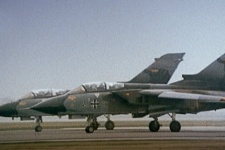 |
Quality public photos of early Luftwaffe Tornados are hard to find, but this video still shows a pair about to take off on a training mission at RAF Cottesmore in 1982. The use of black camouflage gave Norm 76 a much more menacing appearance. (Full video: Bundeswehr) |
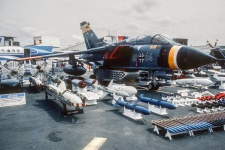 |
A photo of a prototype Tornado at the 1981 Paris Air Show showing its impressive variety of ordinance. For many spectators, this would have been their first sight of the Multi-Role Combat Aircraft (MRCA), as the project was initially called. |
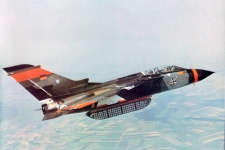 |
A side shot of a Tornado pre-production airframe (98-01) testing one of its iconic early weapons: the MW-1 munitions dispenser. This photo, originally the cover a German-language book, has been digitally altered to have its text removed. |
Luftwaffe Norm 81
Norm 81, applied exclusively to F-4F Phantoms, represented the first major overhaul of Luftwaffe camouflage in two decades. To this date it is one of the most aesthetically pleasing yet complex schemes ever seen on a combat aircraft involving no less than six colors in two complementary patterns (Norm 81A and 81B) as well as multiple variants of those patterns. The dominant color in Norm 81 was RAL 7030 Steingrau (Stone Gray), a pleasant warm gray which was the main color along the sides of the nose and fuselage and the upper part of the fin. It was also one of the two underside colors, the other being RAL 7035 Lichtgrau (Light Gray) which resembles an off white far more than it does a gray. Topside camouflage was a combination of four different colors applied on the wing, the horizontal stabilizers, the lower part of the fin, the upper areas of the engine bulge, and the upper areas of the nose and spine. These colors were RAL 7009 Grüngrau (Green Gray), the modern version of the classic German field gray; the ever-present RAL 7012 Basaltgrau (Basalt Gray); RAL 7037 Staubgrau (Dusty Gray), a lighter and more neutral version of RAL 7012; and RAL 7039 Quarzgrau (Quartz Gray), which resembled a darker version of RAL 7030. Radomes, as well as the tip of the gun muzzle that extended below them, were initially painted in RAL 9005 Tiefschwarz (Jet Black).
The initial pattern, Norm 81A, featured splinter-style straight demarcations on all vertically facing surfaces (both underside and topside) in addition to the fin. In contrast, the nose and fuselage sides featured wave-like demarcations. The later pattern, Norm 81B, dispensed with straight edges altogether, leaving curved demarcations throughout. Additionally, there were numerous variants of each pattern which could also be applied in combination. These variants determined overspray (hard or soft edges), the intensity and frequency of the wave-like demarcations, as well as their height along the fuselage edges. Early variants were notable for the iconic ‘Mickey Mouse ears’ horizontal demarcations positioned high on the sides, while later ones tended to have gentler horizontal demarcations positioned lower. Nevertheless, all patterns and variants could be found throughout the lifetime of the scheme, which lasted into the early 1990s by which time the remaining Luftwaffe Phantoms had switched to the simpler, all-gray Norm 90.
A modernization program known as Improved Combat Efficiency (ICE) began to be implemented on Luftwaffe Phantoms beginning in 1988 in order to make them competitive with newer NATO and Soviet 4th generation fighters pending the delayed introduction of the Eurofighter. The ICE program gave the Phantom a new AN/APG-65GY multi-mode radar, ground-attack capability, and AIM-120 AMRAAM integration among other improvements. Deliveries of fully modernized aircraft began in 1991 and could be easily distinguished by a change in the radome color to a light gray in place of the original black. On Norm 81 Phantoms, this gray had a blueish tinge and resembled the FS 16473 Aircraft Grey used on the F-104. However, it has frequently been cited as RAL 7030 even though photos of newly modernized (and presumably newly painted) aircraft show radomes looking distinctly bluer than the fuselage. Further confusion stems from the fact that radome colors appear to have changed again after the introduction of Norm 90 (see below), taking a warmer tone that indeed looks closer to RAL 7030.
Paint guide:
- RAL 7030 Steinbrau: Despite being the most representative color of the Norm 81 scheme, RAL 7030 is very poorly represented and no online samples to judge accuracy, although it should be assumed that Revell matches well given their good track record on modern RAL colors. Tamiya XF-20 is a noticeably warm gray that captures the tone quite well and is recommended in the absence of alternatives. Vallejo 70.884 is labeled Stone Gray and was once matched to RAL 7030 but is more of a tan than a gray.
- RAL 7009 Grüngrau: Described in the Norm 83 section.
- RAL 7012 Basaltgrau: Described previously.
- RAL 7037 Staubgrau: Poorly represented even by Revell but it's a basic neutral gray which should be relatively easy to substitute with any color that is clearly lighter than RAL 7012. Hataka appears to be quite good.
- RAL 7039 Quarzgrau: Poorly represented even by Revell. This color can be approximated by darkening RAL 7030.
- RAL 7035 Lichtgrau: Poorly represented although both Revell and Hataka have it, the latter looking like the slightly better of the two on account of being lighter.
| RAL 7030 | RAL 7009 | RAL 7012 | RAL 7037 | RAL 7039 | RAL 7035 | |
| Steingrau | Grüngrau | Basaltgrau | Staubgrau | Quarzgrau | Lichtgrau | |
| Schemes | ||||||
| Basic | Sides, Lower Camo | Upper Camo | Upper Camo | Upper Camo | Upper Camo | Lower Camo |
| Color matches | ||||||
| Gunze Mr. Color | - | - | - | - | - | - |
| Gunze Mr. Hobby | - | - | - | - | - | - |
| Humbrol | - | - | - | - | - | - |
| Italeri | - | - | - | - | - | - |
| Model Master | - | - | - | - | - | - |
| Revell | 75 | 67 | 77 | - | - | 371 |
| Tamiya Acrylic | (XF-20) | - | - | - | - | - |
| Tamiya Lacquer | - | - | - | - | - | - |
| Vallejo Model Air | - | - | - | - | - | - |
| Vallejo Model Color | (70.884) | 70.830 | 70.869 | - | - | - |
| AKAN | - | - | - | - | - | - |
| AK 3Gen Acrylic | - | AK11307 | - | - | - | - |
| AK Real Colors | - | RC854* | - | - | - | - |
| AMMO by Mig | - | - | - | - | - | - |
| Hataka | HTK-_233 | HTK-_225 | HTK-_192 | HTK-_249 | HTK-_248 | HTK-_191 |
| Lifecolor | - | UA 233 | - | - | - | - |
| Mission Models | - | - | - | - | - | - |
| Mr. Paint | - | - | MRP-209 | - | - | - |
| Xtracolor | X257 | X256 | X254 | X258 | X259 | X260 |
| Xtracrylix | - | - | - | - | - | - |
Luftwaffe Norm 83 / Heersflieger Norm 84
Norm 83 saw the Luftwaffe introduce a camouflage norm optimized for low-level tactical operations in Central Europe consistent with NATO’s new AirLand Battle doctrine. This was in line with similar camouflage developments elsewhere such as the USAF’s Euro I scheme. Norm 83 consisted of a three-color, fully wraparound disruptive pattern using a green base with grey contrast. It came in three patterns (83A, 83B, and 83C) which varied in the arrangement of the colors and demarcations. The scheme is notable for bringing back two classic World War II panzer colors which had hitherto not been used on aircraft: RAL 6003 Olivgrün (Olive Green) as the lighter of the two greens, as well as RAL 7021 Schwarzgrau (Black Gray) as the dark grey contrast. Although RAL 6003 is largely unchanged from its wartime version (with the caveat that there were numerous variations of its wartime formulation), RAL 7021 is noticeably darker as can be inferred by its change of name: it is widely agreed that the wartime color (then called Dunkelgrau) is closer to the modern RAL 7016. Norm 83 was also a milestone in German camouflage as it was the first norm to include a US Federal Standard (FED-STD) color, auguring a full transition towards US colors during the 1990s. This was FS 36079 Forest Green, which was also used in the Euro I scheme. Depending on lighting and wear, the contrast between RAL 6003 and FS 36079 can vary between subtle and moderate, although the latter will always be characterized by a browner tinge. Additionally, radomes remained RAL 9005 Tiefschwarz (Jet Black) while the dielectric fin cover was left in RAL 7012 Basaltgrau (Basalt Gray), a leftover from the earlier Norm 76 scheme.
Norm 83 is colloquially known as the ‘Lizard Scheme’ and is most associated with the Tornado IDS which during the 1980s become the Luftwaffe’s main ground attack aircraft. But it was also applied to F-104Gs and Alpha Jets as well as reconnaissance RF-4E Phantoms. Norm 83 was relatively short-lived on tactical aircraft as the emphasis on low-level operations receded with the end of the Cold War and all-gray schemes began to be introduced. However, it remained in widespread use during the 1990s and many Tornado IDS aircraft were still seen using it even in the early 2010s. It also survived on C-160 transports until their retirement in 2022. Aside from the Luftwaffe, a version of this scheme was introduced for the Heersflieger (the army aviation arm) which operated the majority of Germany's land-based helicopters. Known as Norm 84, it used the same three colors in a similar wraparound pattern as Norm 83 and remains in use to this day on CH-53, NH90, and Tiger UHT helicopters. A two-color variation of this scheme was applied to PAH-1 (Bo 105P) attack helicopters, using only RAL 6003 and RAL 7021.
Paint guide:
- FS 34079 Forest Green: Widely available and with the benefit of being one of the few military colors that tends to be almost universally accurate so it's hard to go wrong.
- RAL 6003 Grüngrau: This is a widely available color being one of the three used in the Wehrmacht’s mid/late war tri-color scheme. As expected, Revell’s 361 is spot on with the modern shade. Tamiya’s XF-89 is very good and the excellent coverage of Tamiya paints would make it ideal for a base coat for any Norm 83 aircraft. AK Real Colors’ RC852 is too bright for my liking although this could be ideal for those wanting more contrast with FS 34079 as many photos show. Some of the other brands appear to lean on the darker side which may present problems in creating contrast with FS 34079. The modern RAL 6003 is also seen as an equivalence to FS 34095 Field Green and often labeled to match both.
- RAL 7021 Schwarzgrau: This is one of the few colors that is available in every single major model paint brand, unfortunately it is invariably matched with the lighter wartime shade. Revell’s 09 is the exception as is Xtracolor which includes modern (X260) as well as wartime versions (X800), although only the latter is available in acrylic. AK Real Colors offered a modern version (RC341) but this was discontinued in its 2024 reformulation. In practice, a wartime match should not be a problem as the lighter shade will incorporate scale effect and contrast less aggressively with the two lighter greens.
| RAL 6003 | FS 34079 | RAL 7021 | |
| Grüngrau | Forest Green | Schwarzgrau | |
| Schemes | |||
| Norm 83 | Camo | Camo | Camo |
| Norm 84 | Camo | Camo | Camo |
| Norm 84 (PAH-1) | Camo | Camo | |
| Color matches | |||
| Gunze Mr. Color | - | C309 | C513 |
| Gunze Mr. Hobby | - | H309 | H513 |
| Humbrol | - | 116 | 67 |
| Italeri | - | 4726AP (!) | 4795AP |
| Model Master | 2149 | 1710 | 2094 |
| Revell | 361 | - | 09 |
| Tamiya Acrylic | XF-89 | - | XF-63 |
| Tamiya Lacquer | LP-56 | - | LP-27 |
| Vallejo Model Air | 71.092 | 71.294 | 71.056 |
| Vallejo Model Color | 70.890** | 70.893 | 70.862 |
| AKAN | 6/71001 | 7/62002 | 6/71005 |
| AK 3Gen Acrylic | AK 11309 | AK11346 | AK11316 |
| AK Real Colors | RC852 | RC900 | RC856 |
| AMMO by Mig | A.MIG-001 | A.MIG-206* | A.MIG-008 |
| Hataka | HTK-_059** | HTK-_016 | HTK-_164 |
| Lifecolor | UA 206 | UA 001 | UA 207 |
| Mission Models | MMP-009 | MMP-058 | MMP-014 |
| Mr. Paint | MRP-035 | MRP-101 | MRP-034 |
| Xtracolor | X261 X806* |
X110 | X260 X800* |
| Xtracrylix | XA1806 | XA1110 | X1800 |
Luftwaffe Norm 90
Norm 90 was an air defense scheme which marked the beginning of a transition towards all-grey camouflage schemes as well as the use of US FED-STD colors instead of local RAL colors, this norm being the first one to be based entirely on them. The scheme is also known as Norm 90J, the J standing for jäger (fighter) since it was applied exclusively to F-4F Phantoms (the primary Luftwaffe fighter at the time) as well as MiG-29 Fulcrums which had been inherited from the former East German air force after the 1990 unification. Topside colors consisted of FS 35237 Blue Gray and FS 36320 Dark Ghost Gray, the latter covering the nose as well as the outer sections of the wings and stabilizers and also wrapping around the undersides. Undersides were FS 36375 Light Ghost Gray except in those areas with FS 36320 wraparound. This pattern was somewhat reminiscent of the USAF’s Hill Grey scheme which was used on F-16s and some late F-4E/Gs, although Norm 90 used curved demarcations and subtler color contrasts. The MiG-29 additionally featured extensive dielectric panels that were likely repainted RAL 7012 like those on the Tornado, making nearly indistinguishable from the shade of the original Soviet radome gray that they were delivered in.
The Improved Combat Efficiency (ICE) program (described in the Norm 81 section) was implemented shortly after Norm 90 was introduced and the majority of modernized aircraft would eventually be painted in the new norm. As a result, most Norm 90 Phantoms featured the lighter radomes although a small number of non-modernized aircraft retained their original black radomes until they were taken out of service in the late 2000s. Some of these were also seen with RAL 2005 Leuchtorange (Luminous Orange) identification markings which suggests that they were relegated to training duties. It also seems that there was a change in the radome color compared to Norm 81, since those used on Norm 90 aircraft feature a warmer gray that is often matched to RAL 7030 Steingrau (Stone Gray) although it could have also been a similar FED-STD color like FS 36307 Bulkhead Gray. Modernized Phantoms remained in Luftwaffe service until 2013, a full decade after their replacement, the Eurofighter, was introduced.
Paint guide:
- FS 35237 Blue Gray: Well represented given that it is a popular modern USN color. The Mr. Paint version looks spot on and suitably blue in the bottle and the AK Real Versions is excellent too, although with the blue slightly toned down. The Xtracolor/Xtracrylix, AKAN, and AMMO by Mig versions appear too dark, while Gunze is a bit too gray which will result in a much more subtle contrast with its (already too blue) FS 36320.
- FS 36320 Dark Ghost Gray: Being possibly the most common USAF/USN color, it is important to get this color right and also ensure that it harmonizes well with its counterpart, FS 36375 given that both are typically used together. Sadly discontinued, Model Master was for a long time the gold standard for both Ghost Grays but some of the newer ranges have very good representations including AK Real Colors and Lifecolor which capture the slightly bluish tint perfectly, as does Vallejo Model Air. Both Gunze (C307/H307) as well as Tamiya (only available in LP-36 lacquer) versions harmonize well with each other but are noticeably bluer than they should be, with Tamiya perhaps excessively so. The Mr. Paint version appears too grey
- FS 36375 Light Ghost Gray: As with its lighter counterpart, AK Real Colors, and Lifecolor are possibly the best, with Gunze and Tamiya also too blue and Mr. Paint also too gray. Strangely Vallejo only includes this rather vital color as a primer (70.615) rather than in its more airbrush-friendly Model Air range and has a greenish tinge.
- RAL 7030: Described previously.
| FS 35237 | FS 36320 | FS 36375 | RAL 7030 | |
| Blue Gray | Dark Ghost Gray | Light Ghost Gray | Steingrau | |
| Schemes | ||||
| Norm 90 | Upper Camo | Upper Camo | Lower | Radome |
| Color matches | ||||
| Gunze Mr. Color | C337 | C307 | C308 | - |
| Gunze Mr. Hobby | H337 | H307 | H308 | - |
| Humbrol | 145 | 128 | 127 | - |
| Italeri | - | 4761AP (!) | 4762AP (!) | - |
| Model Master | 1721 | 1741 | 1728 | - |
| Revell | - | - | - | 75 |
| Tamiya Acrylic | - | - | - | (XF-20) |
| Tamiya Lacquer | - | LP-36 | LP-37 | - |
| Vallejo Model Air | 71.114 | 71.120 | - | - |
| Vallejo Model Color | 70.905 | - | 70.615 | (70.884) |
| AKAN | 6/72043 | 6/72030 | 6/72032 | - |
| AK 3Gen Acrylic | - | AK11887 | AK11888 | - |
| AK Real Colors | RC909 | RC919 | RC920 | - |
| AMMO by Mig | A.MIG-210** | A.MIG-208 | A.MIG-203 | - |
| Hataka | HTK-_046 | HTK-_035 | HTK-_037 | HTK-_233 |
| Lifecolor | UA 145** | UA 027 | UA 026 | - |
| Mission Models | MMP-072 | MMP-074 | MMP-073 | - |
| Mr. Paint | MRP-105 | MRP-97 | MRP-38 | - |
| Xtracolor | X126 | X135 | X136 | X257 |
| Xtracrylix | XA1126 | XA1135 | XA1136 | - |
Luftwaffe Norm 95
The Norm 95 scheme was applied from the mid-1990s to the Luftwaffe’s Tornado IDS and ECR fleet. The colors used were identical to those in Norm 90, these being the topside colors of FS 35237 Blue Gray and FS 36320 Dark Ghost Gray the latter which also covered the upper nose as well as the outer sections of the wings and stabilizers. Undersides were FS 36375 Light Ghost Gray in their entirety and this color extended up into the lower nose and fuselage sides, thus eliminating the partial FS 36320 wraparound that existed in Norm 90. Tornados retained their traditional black radomes while dielectric fin covers were initially left in their original RAL 7012 Basaltgrau (Basalt Gray) but later repainted in FS 35237. The downscaling of the Marineflieger after the end of the Cold War also resulted in many Tornados eventually transferring to the Luftwaffe where they were repainted in Norm 95.
A notable precursor to the Norm 95 scheme came during NATO’s 1995 intervention in Bosnia (Operation Deliberate Force) which saw Tornado ECRs from JaboG 32 undertake Germany’s first combat operations since World War II. These Tornados initially arrived to San Damiano, Italy in their Cold War-era Norm 83 scheme but this was soon determined to be unsuitable for higher altitude SEAD missions. As a result, they were repainted in an interim light grey, with only the canopy frames and the areas around important stencils masked off and left in their original colors. This color is believed to have been a commercial paint sourced locally but appears closest to RAL 7035 Lichtgrau or FS 36495 Light Gray. This interim scheme was short-lived and Norm 95 was soon applied to Tornados deployed in the region over the next few years including those which participated in NATO’s 1999 intervention in Kosovo (Operation Allied Force).Paint guide:
- All colors described previously.
| FS 35237 | FS 36320 | FS 36375 | |
| Blue Gray | Dark Ghost Gray | Light Ghost Gray | |
| Schemes | |||
| Norm 90 | Upper Camo, Dielectric | Upper Camo | Lower |
| Color matches | |||
| Gunze Mr. Color | C337 | C307 | C308 |
| Gunze Mr. Hobby | H337 | H307 | H308 |
| Humbrol | 145 | 128 | 127 |
| Italeri | - | 4761AP (!) | 4762AP (!) |
| Model Master | 1721 | 1741 | 1728 |
| Revell | - | - | - |
| Tamiya Acrylic | - | - | - |
| Tamiya Lacquer | - | LP-36 | LP-37 |
| Vallejo Model Air | 71.114 | 71.120 | - |
| Vallejo Model Color | 70.905 | - | 70.615 |
| AKAN | 6/72043 | 6/72030 | 6/72032 |
| AK 3Gen Acrylic | - | AK11887 | AK11888 |
| AK Real Colors | RC909 | RC919 | RC920 |
| AMMO by Mig | A.MIG-210** | A.MIG-208 | A.MIG-203 |
| Hataka | HTK-_046 | HTK-_035 | HTK-_037 |
| Lifecolor | UA 145** | UA 027 | UA 026 |
| Mission Models | MMP-072 | MMP-074 | MMP-073 |
| Mr. Paint | MRP-105 | MRP-97 | MRP-38 |
| Xtracolor | X126 | X135 | X136 |
| Xtracrylix | XA1126 | XA1135 | XA1136 |
Luftwaffe Blue Gray scheme (2003-Today)
The introduction of the Eurofighter Typhoon (simply called the Eurofighter in German service) in 2003 saw the Luftwaffe further simplify its once-elaborate camouflage into a single-color scheme consisting of FS 35237 Blue Grey. It is not believed to carry a Norm number, possibly because of its single-color nature. This scheme has been applied to all production Eurofighters delivered to the Luftwaffe and was also subsequently applied to many Tornados, both IDS and ECR. However, the exact year and the criteria for repainting them in this scheme is unclear to this author, since many still remain in their Norm 95 colors to this day. The first Tornado spotted on Jetphotos (a popular online aircraft photo repository) with the single-color scheme appears in 2006, and it becomes more widespread from 2008 onward. A possible (but unverified) criterion is that the new single-color scheme is applied on Tornados that have undergone modernization through the ASSTA program which began in 2000. This program, which has so far consisted of three phases, has added upgraded avionics and the capability to carry a wider range of NATO ordinance and targeting systems. The precedent of ICE-modernized Phantoms receiving different colored radomes could be indicative of ASSTA-modernized Tornados being the first ones to receive the new single-color scheme.
Eurofighter radomes are painted in an abrasion resistant coating matched to FS 36314 Flint Gray. This color is a very close equivalence to BS 381C 626 Camouflage Grey, which is evident when comparing the radome (FS) and fuselage (BS) colors of newly built RAF Typhoons. This color also appears to be used on the large number of dielectric panels and antenna covers throughout the airframe as well as on the fuel tanks and some pylons. In contrast, Tornados retained their traditional black radomes while dielectric fin covers were left in the same fuselage color of FS 35237.
Paint guide:
- FS 35237 Blue Gray: Described previously.
- FS 36314 Flint Gray: Not a well represented color aside from a few of the newer brands. Its close similarity to the much more popular BS 381C 626, however, means the latter is a perfectly acceptable substitute. Matches to FS 36314 are provided below while matches to BS 381C 626 are found in the Royal Air Force (Modern) page.
| FS 35237 | FS 36314 | |
| Blue Gray | Flint Gray | |
| Schemes | ||
| Norm 90 | Overall | Radome, Dielectric |
| Color matches | ||
| Gunze Mr. Color | C337 | - |
| Gunze Mr. Hobby | H337 | - |
| Humbrol | 145 | - |
| Italeri | - | - |
| Model Master | 1721 | 2037 |
| Revell | - | - |
| Tamiya Acrylic | - | - |
| Tamiya Lacquer | - | - |
| Vallejo Model Air | 71.114 | - |
| Vallejo Model Color | 70.905 | - |
| AKAN | 6/72043 | 72013 |
| AK 3Gen Acrylic | - | - |
| AK Real Colors | RC909 | - |
| AMMO by Mig | A.MIG-210** | A.MIG-207 |
| Hataka | HTK-_046 | - |
| Lifecolor | UA 145** | UA 079 |
| Mission Models | MMP-072 | - |
| Mr. Paint | MRP-105 | - |
| Xtracolor | X126 | X143 |
| Xtracrylix | XA1126 | - |
![]()
Marineflieger
Early Marineflieger (1956-1969)
The Kommando der Marineflieger was the naval air arm of the Bundesmarine and was established in 1956 with considerable assistance from the UK’s Fleet Air Arm, which provided its first aircraft and trained its first pilots. Its initial force consisted of British-built Hawker Sea Hawk fighters and Fairey Gannet anti-submarine warfare (ASW) aircraft and used the classic FAA scheme of Extra Dark Sea Grey topsides and Sky (officially Sky Type S) undersides. Note that the wartime MAP standard rather the BS 381C standard was still in use during this time, although neither of these colors changed significantly when they were incorporated into BS 381C (as 640 and 210 respectively) in 1964. The Marineflieger received its first F-104G Starfighters in 1963 and there were initially painted in the Norm 62 scheme which was common to all Bundeswehr air arms. Another aircraft received during this period was the Bréguet Br.1125 Atlantic patrol aircraft which gradually replaced the Gannet. It was delivered in French Aéronavale colors which consisted of a medium sea grey topside and off-white undersides (the exact colors are unknown to this author). The nearly identical Norm 76 scheme was introduced soon after the first Atlantics were received, and its use would have been apparent given that the topside color of RAL 7012 Basaltgrau was moderately darker than the French original.
The first major helicopter operated by the Marineflieger was the Sikorsky H-34 (S-58) which was primarily used for search and rescue (SAR). These were seen with a dull metallic exterior that may have been (or was similar to) RAL 9006 Weißaluminium (White Aluminum). As with most SAR helicopters, they also featured very prominent RAL 2005 Leuchtorange (Luminous Orange) identification markings for easy identification at sea. Some Westland-built Sea King Mk 41s also appeared in these colors when used for SAR purposes.
Paint Guide:
- Extra Dark Sea Grey: Very well covered and tends to be quite accurate, though the AK Real Colors version (RC969) is on the lighter side and more appropriate for a heavily faded aircraft. EDSG is often considered a close equivalence of FS 36118 but the latter is slightly lighter and noticeably less blue.
- Sky: Being a classic wartime RAF color, it is widely available and generally well reproduced. For Gunze paints, C368 is the closest to the chip although the older C26/H74 are perfectly acceptable if slightly paler (which could be preferable for scale effect). The AK Real Colors version (RC964) matches the wartime color almost perfectly. Tamiya's XF-21 gets the tone right but is too dark and is best avoided given that there are so many better alternatives. Humbrol 90 has been known to change over the years although the current (post-Hornby) version looks better than its predecessors.
| Extra Dark Sea Grey | Sky | |
| Schemes | ||
| Early (FAA) | Overall | Overall |
| Color matches | ||
| Gunze Mr. Color | C333 | C26 C368 |
| Gunze Mr. Hobby | H333 | H74 |
| Humbrol | 123 | 90 |
| Italeri | 4312AP | 4856AP |
| Model Master | 2059 | 2049** |
| Revell | - | 59 |
| Tamiya Acrylic | - | (XF-21) |
| Tamiya Lacquer | - | - |
| Vallejo Model Air | 71.110 | 71.302 |
| Vallejo Model Color | - | - |
| AKAN | 6/70019 | 6/70005 |
| AK 3Gen Acrylic | AK11850 | AK11844 |
| AK Real Colors | RC969 | RC964 |
| AMMO by Mig | - | A.MIG-243 |
| Hataka | HTK-_140 | HTK-_026 |
| Lifecolor | UA 109** | UA 095** |
| Mission Models | MMP-138 | MMP-080 |
| Mr. Paint | MRP-114 | MRP-118 |
| Xtracolor | X005 | X007 |
| Xtracrylix | XA1005 | XA1007 |
Marineflieger Norm 76
Norm 76, also specified in technical order TA-196-3 from 16 June 1969, was the first instance of differentiating Luftwaffe and Marineflieger schemes. This made sense given the distinct requirements for concealing aircraft over water, which the earlier Norm 62 was not particularly well suited for. Norm 76 was a relatively simple scheme consisting of a RAL 7012 Basaltgrau (Basalt Gray) topside over RAL 7035 Lichtgrau (Light Gray) or RAL 9006 Weißaluminium (White Aluminum), the latter applied exclusively on the F-104s fielded by the Marineflieger’s two strike wings, MFG 1 and MFG 2. Other characteristics such as radome colors were left unchanged. Use of RAL 2005 Leuchtorange (Luminous Orange) identification markings was retained on Marineflieger F-104s, most likely to help identify wreckages over water in what was a notoriously accident-prone aircraft, so much that it was infamously nicknamed the Witwenmacher (widow maker) by its German pilots. These markings were extensively used on the Sea King Mk 41 helicopter as well given its search and rescue (SAR) role. Notably, the Sea King featured an all-RAL 7012 fuselage without a lighter underside.
Norm 76 copied the camouflage conventions of many post-war NATO naval air arms such as the British Fleet Air Arm and the French Áeronavale, which were well suited to the greyish seas and overcast skies of the North Sea and the Baltic. So while the scheme may have been far from unique, it gave the Marineflieger its first distinctive look and is now seen as iconic on aircraft such as the F-104 and Tornado as well as on many naval helicopters like the Sea Lynx. It remains in use on Atlantic patrol aircraft to this day.
Paint guide:
- All colors described previously. For RAL 7035, a grayish off-white such as Gunze C69/H21 or one matching RAL 9002 Grauweiß (Gray White) may be preferred for scale effect.
| RAL 7012 | RAL 7035 | RAL 9006 | RAL 2005 | |
| Basaltgrau | Lichtgrau | Weißaluminium | Leuchtorange | |
| Schemes | ||||
| Norm 76 | Upper | Lower | (Id) | |
| Norm 76 (F-104) | Upper | Lower | (Id) | |
| Color matches | ||||
| Gunze Mr. Color | - | - | - | (C173) (!) |
| Gunze Mr. Hobby | - | - | - | (H98) (!) |
| Humbrol | - | - | - | (209) |
| Italeri | - | - | - | - |
| Model Master | - | - | - | - |
| Revell | 77 | 371 | - | 25 |
| Tamiya Acrylic | - | - | - | - |
| Tamiya Lacquer | - | - | - | - |
| Vallejo Model Air | - | - | - | 71.082** |
| Vallejo Model Color | 70.869 | - | - | 70.733** |
| AKAN | - | - | - | - |
| AK 3Gen Acrylic | - | - | - | (AK11081) (!) |
| AK Real Colors | - | - | - | (RC838) (!) |
| AMMO by Mig | - | - | - | - |
| Hataka | HTK-_192 | HTK-_191 | HTK-_190 | HTK-_194 |
| Lifecolor | - | - | - | - |
| Mission Models | - | - | - | MRP-194 |
| Mr. Paint | MRP-209 | - | - | - |
| Xtracolor | X254 | X260 | X252 | X253 |
| Xtracrylix | - | - | - | - |
Marineflieger Norm 87
The long-standing grey over white schemes popular among NATO naval air arms gradually gave way in the 1980s into single-color or disruptive schemes. The Marineflieger was no exception and this was reflected in Norm 87, a stunning scheme that was something of a naval counterpart to the Luftwaffe’s Norm 83. Norm 87 was a three-color, fully wraparound disruptive pattern which consisted of the earlier RAL 7012 Basaltgrau (Basalt Gray); RAL 7009 Grüngrau (Green Gray), the modern incarnation of the classic Feldgrau Nr.2 color; and RAL 5008 Graublau (Blue Gray), a very dark blue-gray that was something of a bluer version of the RAL 7021 used on Norm 83. The camouflage effect of the two schemes was very similar, with the two lighter grays offering a subtle change in tone which was then complemented by the stronger contrast with RAL 5008. Norm 87 also came in two distinct patterns (87D and 87E), which varied in the arrangement of the colors and the direction of the demarcation outlines. The choice of the letters D and E to designate these patterns is perhaps suggestive of the scheme’s continuity with Norm 83 which featured A, B, and C patterns.
The standard version of Norm 87 was used exclusively on the Tornado IDS given that the F-104 was retired from service in 1987. However, variants of it existed for the Marineflieger’s Dornier Do 28D Skyservant utility aircraft as well as Sea King helicopters, primarily those used for anti-submarine warfare (ASW) and which could be identified by the Ferranti Seaspray radar in a black nose radome. For the Do 28D, RAL 7012 was retained as the darker contrast color and was combined with RAL 7030 Steingrau (Stone Gray) and RAL 7032 Kieselgrau (Pebble Gray), both of these being warm greys that harmonized well with each other, the latter being the lighter of the two. The Sea King featured a slightly darker combination consisting of RAL 7012, RAL 7009, and RAL 7032. Additionally, there were small sections of RAL 7021 Schwarzgrau (Black Gray) around the engine intakes.
In a decade that saw some of the most eye-catching camouflage schemes, Norm 87 certainly stands out for its equally attractive and menacing appearance, all the more considering its association with such a legendary aircraft like the Tornado. Unfortunately, Norm 87 would be the last camouflage scheme adopted exclusively by the Marineflieger: it’s two Tornado-equipped strike wings, MFG 1 and MFG 2, were disbanded in 1993 and 2005 respectively and remaining aircraft were transferred to the Luftwaffe. However, the Sea King variant of Norm 87 would live on until its retirement in 2024 after a half-century of service.
Paint guide:
- RAL 7009: Described previously.
- RAL 7012: Described previously.
- RAL 5008: This was used as an early IAF color but is nevertheless poorly represented. The AK Real Colors version (RC208) is now discontinued but was too bright, but the MRP version looks good in the bottle. A 1:1 mix of Tamiya XF-17 and XF-24 can also produce a close enough result with scale effect factored in.
- RAL 7030: Described previously.
- RAL 7032: This color unfortunately does not exist on any known scale model paint brand. But it can be reproduced by slightly lightening RAL 7030.
| RAL 7009 | RAL 7012 | RAL 5008 | RAL 7030 | RAL 7032 | |
| Grüngrau | Basaltgrau | Graublau | Steingrau | Kieselgrau | |
| Schemes | |||||
| Norm 87 (Tornado) | Camo | Camo | Camo | ||
| Norm 87 (Do 28D) | Camo | Camo | Camo | ||
| Norm 87 (Sea King) | Camo | Camo | Camo | ||
| Color matches | |||||
| Gunze Mr. Color | - | - | - | - | - |
| Gunze Mr. Hobby | - | - | - | - | - |
| Humbrol | - | - | - | - | - |
| Italeri | - | - | - | - | - |
| Model Master | - | - | - | - | - |
| Revell | 67 | 77 | - | 75 | - |
| Tamiya Acrylic | - | - | - | (XF-20) | - |
| Tamiya Lacquer | - | - | - | - | - |
| Vallejo Model Air | - | - | - | - | - |
| Vallejo Model Color | 70.830 | 70.869 | - | (70.884) | - |
| AKAN | - | - | - | - | - |
| AK 3Gen Acrylic | AK11307 | - | - | - | - |
| AK Real Colors | RC854* | - | - | - | - |
| AMMO by Mig | - | - | - | - | - |
| Hataka | HTK-_225 | HTK-_192 | HTK-_171 | HTK-_233 | - |
| Lifecolor | UA 233 | - | - | - | - |
| Mission Models | - | - | - | - | - |
| Mr. Paint | - | MRP-209 | MRP-281 | - | - |
| Xtracolor | X256 | X254 | X264 | X257 | - |
| Xtracrylix | - | - | - | - | - |
![]()
Other
Cockpits (1956-Today)
The German aviation industry has failed to produce a fully domestic major combat aircraft in the post-war period, relying entirely on foreign-supplied aircraft of multi-national collaborations. As a result, interior colors on Luftwaffe and Bundesmarine aircraft tend to follow the national conventions of the aircraft in question. Although the origin of these aircraft was from the immediate post-war years, the variants used by the Luftwaffe tended to be later ones (F-84F from Block 51 onward, CL-13 Sabre Mk 6, and F-86K) built after the November 1953 switch to FS 36231 Dark Gull Gray on all US military aircraft cockpits. FS 36231 was also used on the F-104 and F-4 as well as on the multi-national Tornado and Eurofighter. Contrary to an oft repeated claim, there is no evidence that Tornados used Dark Admiralty Gray (BS 381C 632) as a cockpit color. This confusion probably stems from the fact that it was the standard British cockpit color at the time, but adopting it on the Tornado would have made little sense given that both German and Italian air forces primarily used US aircraft with FS 36231 cockpits (as did the British themselves with the Phantom). The exact cockpit of the Franco-German Alpha Jet (at least the German A variant) is unknown to this author. Some photos show a resemblance to FS 36231 although others show a slightly darker gray. Adding to the confusion is that French E variants seem to have blue-gray instrument panels. Lastly, the Marineflieger’s British-built Sea Hawks and Gannets used all-black Night (later BS 381C 642) cockpits while Soviet-built MiG-29s used a blueish light gray which is unique to this aircraft.
Paint Guide:
- FS 36231 Dark Gull Gray: Very well represented and generally quite accurate. Notable absences are Revell and Tamiya, although XF-54 has often been taken as a close equivalent although it is slightly lighter. Given that cockpit colors often appear lighter than they are, this should be well within the range of tolerance.
- Night: There are few specific matches to Night but any black will do. A black grey is best recommended for cockpits since smaller details like cockpit instruments can stand out better in a pure black.
| FS 36231 | |
| Dark Gull Gray | |
| Schemes | |
| US, Multi-National | Overall |
| Color matches | |
| Gunze Mr. Color | C317 |
| Gunze Mr. Hobby | H317 |
| Humbrol | 140 |
| Italeri | 4755AP |
| Model Master | 1740 |
| Revell | - |
| Tamiya Acrylic | - |
| Tamiya Lacquer | - |
| Vallejo Model Air | 71.277* |
| Vallejo Model Color | 70.991 |
| AKAN | 62009 6/72064* |
| AK 3Gen Acrylic | AK11884 |
| AK Real Colors | RC916 |
| AMMO by Mig | A.MIG-205 |
| Hataka | HTK-_044* |
| Lifecolor | UA 033 |
| Mission Models | MMP-064 |
| Mr. Paint | MRP-100 |
| Xtracolor | X131 |
| Xtracrylix | XA1131 |
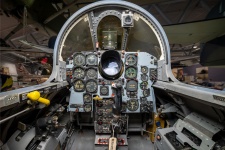 |
The Royal Norwegian Air Force received its RF-84Fs around the same time as the Luftwaffe and these would have arrived with FS 36231 cockpits, as would all other future US-designed aircraft. (Source: Norsk Luftfartsmuseum) |
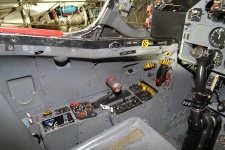 |
The cockpit color of the Alpha Jet is something of a mystery, although FS 36231 looks like a very good guess for the Luftwaffe's A version. (Walkaround: Modelbau 360) |
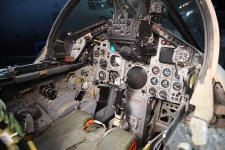 |
This Tornado GR.1 displayed in the National Museum of the US Air Force unmistakenly shown FS 36231. If British Tornados used FED-STD cockpits, German ones certainly did too. (Source: National Museum of the USAF) |
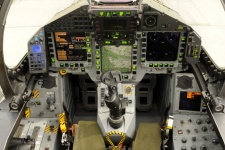 |
The Eurofighter largely used FED-STD colors for all of its internal components. Cockpits, predictably, used FS 36231 as well. (Source: Ministry of Defense) |
Interiors (1956-Today)
Much like cockpits, interior sections like landing gear and wheel wells reflected the prevalent colors used by that particular aircraft. Sabres, both CL-13 and F-86K, ostensibly featured FS 34151 Interior Green wheel wells although some photos show a deeper green closer to the wartime Bronze Green, which was known to have been used by North American on certain P-51 components like seats. Complicating matters is that some photos also show black or blackened sections of the wheel wells. This may all represent subsequent repaints rather than the factory colors. Both the F-104 and Alpha Jet used natural metal interiors, whereas the F-4 used the US standard interior color of FS 17875 Insignia White. The Tornado SIG indicates FS 16622 as the main interior color for Tornados but it does not officially exist in gloss, so the semigloss FS 26622 Camouflage Gray is more likely and certainly matches many photos. Some Tornado interiors have also been pictured in a blue gray that looks similar to some contemporary British underside colors such as BS 631 Light Grey or BS 627 Light Admiralty Grey. It may also be matching FS 16473 Aircraft Gray which has been used on USAF wheel wells. Eurofighter interiors have been quoted as being FS 26492 Light Gray. This is very close to RAL 7035 and next to a darker color would appear more like an off white.
British-built Marineflieger aircraft followed the wartime and post-war convention of having interior sections (including the Gannet's bomb bay) factory painted in the underside color, in this case Sky (later BS 210). However, preserved aircraft can be seen in a wide variety of alternative colors including blue-grey interiors or black bomb bays on the Gannet which may be as a result of subsequent repainting. Gannet wheel wells in particular can be found in natural metal, grey, or blue-grey. Wheel caps on both aircraft were left in natural metal. Lastly, MiG-29 interiors were painted in a Soviet Grey-Blue that has sometimes been compared to RLM 76. Wheel caps, as in all Soviet/Russian aircraft, were painted in the well-known Radome Green. More information including equivalences are in the Soviet/Russian Air Force and Navy (Modern) page.
Without any verification from primary sources, it is recommended to take these color suggestions as non-definitive as they are only based on pictorial evidence from walkabouts. Furthermore, many of these aircraft may have been repainted over the course of their service lives or during restoration and therefore do not reflect their original factory colors.
| Cockpit | Wells | Covers | Gear | Caps | |
| Sea Hawk | |||||
| BS 642 | BS 210 | BS 210 | BS 210 | Metal | |
| Gannet | |||||
| BS 642 | BS 210 | BS 210 | BS 210 | Metal | |
| F-84F | |||||
| FS 36231 | FS 34151 | Metal | Metal | Metal | |
| CL-13/F-86K | |||||
| FS 36231 | FS 34151 | Metal | Metal | Metal | |
| F-104G | |||||
| FS 36231 | Metal | Metal | Metal | Metal | |
| F-4F | |||||
| FS 36231 | FS 17875 | FS 17875 | FS 17875 | FS 17875 | |
| Alpha Jet A | |||||
| FS 36231* | Metal | Metal | Metal | Metal | |
| Tornado | |||||
| FS 36231 | FS 26622 | FS 26622 | FS 26622 | FS 26622 | |
| MiG-29 | |||||
| Light Gray | Gray-Blue | Gray-Blue | Gray-Blue | Green | |
| Eurofighter | |||||
| FS 36231 | FS 26492 | FS 26492 | FS 26492 | FS 26492 |
Paint Guide:
- FS 34151 Interior Green: Being the most common US interior color of World War II (as ANA 611), this color is very well represented. Most paint brands match the FED-STD color, which has been described as having a duller olive tone than ANA 611. Both the AK Real Colors and Hataka versions are noticeably pale and should be avoided.
- FS 17875 Insignia White: Described previously.
- FS 26622 Camouflage Gray: The flat version of this color, FS 36622, is well known as the underside color of the Vietnam War-era USAF SEA scheme and so is widely available. This color is also similar to BS381C 627 Light Aircraft Gray which has been frequently quoted as a Tornado interior color (though possibly only for RAF repaints).
- FS 26492 Light Gray: Virtually non-existent with only Mr. Paint carrying it as did the now discontinued Model Master. This is a very similar color to RAL 7035 which is more readily available, otherwise, any grayish off white will do given how light it looks on photos.
| FS 34151 | FS 17875 | FS 26622 | FS 26492 | |
| Interior Green | Insignia White | Camouflage Gray | Light Gray | |
| Schemes | ||||
| Interiors | F-84 / F-86 | Phantom | Tornado | Eurofighter |
| Color matches | ||||
| Gunze Mr. Color | - | C316 | C311 | - |
| Gunze Mr. Hobby | C351* | H316 | H311 | - |
| Humbrol | 226 | - | 28 | - |
| Italeri | 4736AP | 4696AP (!) | 4763AP (!) | - |
| Model Master | 1715 | 1745 | 1733 | 2038 |
| Revell | - | - | - | - |
| Tamiya Acrylic | - | - | - | - |
| Tamiya Lacquer | - | LP-34 | - | - |
| Vallejo Model Air | 71.137* | 71.279* | 71.296 | - |
| Vallejo Model Color | 70.850 (!) | - | - | - |
| AKAN | 6/72004 | - | 6/72023 | - |
| AK 3Gen Acrylic | AK11335 | AK11868 | AK11890 | - |
| AK Real Colors | RC906 | RC891 | RC922 | - |
| AMMO by Mig | A.MIG-220 | - | A.MIG-226 | - |
| Hataka | HTK-_211* | HTK-_043 | HTK-_039 | - |
| Lifecolor | UA 004 | UA 148 | UA 021 | - |
| Mission Models | MMP-059 | MMP-104 | MMP-095 | - |
| Mr. Paint | MRP-131* | MRP-99 | MRP-104 | MRP-362 |
| Xtracolor | X117 | X141 | X140 | - |
| Xtracrylix | XA1117 | XA1141 | XA1140 | - |
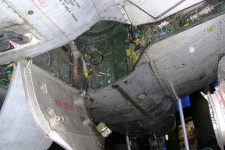 |
The wheel well of this Dutch F-86K (the same variant used by the Luftwaffe) shows a very puzzling green quite different from ANA 611. Note the blackened sections as well as some patches in Zinc Chromate. (Source and walkaround: Aircraft Walkaround Center) |
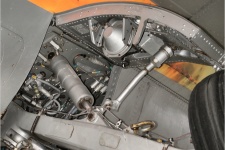 |
The US's 'Century Series' of aircraft came with many different interior colors before these were standardized into FS 17875. The F-104's were all natural metal perhaps to emphasize its slick, futuristic appearance which its performance never lived up to. (Source and walkaround: Burkhard Domke) |
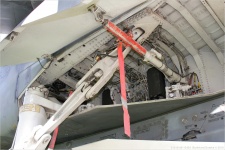 |
Tornado interiors are typically seen in a warm light gray which has been quoted as FS 26622. (Source and walkaround: Burkhard Domke) |
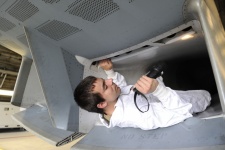 |
Gratitude is in order to this Eurofighter technician, whose impeccably white jacket allows us to contrast the light gray intakes, quoted as being FS 26492. (Source: Eurofighter) |
Color Standard Summary
| RAL 840 B 2 | RAL 840 R | ||||
| RAL 2005 | Leuchtorange | Identification markings | - | - | |
| RAL 5008 | Graublau | Norm 87M | - | - | |
| RAL 6003 | Olivgrün | Norm 83L, 84H | - | Olivgrün | |
| RAL 6014 | Gelboliv | Norm 62, 72L, 76L, 81L | - | - | |
| RAL 7001 | Silbergrau | Norm 62, 72L, 76L, 76M | 50 | Hellgrau | |
| RAL 7009 | Grüngrau | Norm 87M | 2 | Hellgrau | |
| RAL 7012 | Basaltgrau | Norm 62, 72L, 76L, 76M, 81L, 87M | - | - | |
| RAL 7021 | Schwarzgrau | Norm 83L, 84H | 46 | Dunkelgrau | |
| RAL 7030 | Steingrau | Norm 81L, 87M | - | - | |
| RAL 7032 | Kieselgrau | Norm 87M | - | - | |
| RAL 7035 | Lichtgrau | Norm 76M, 81L | - | - | |
| RAL 7037 | Staubgrau | Norm 81L | - | Dunkelgrau | |
| RAL 7039 | Quarzgrau | Norm 81L | - | - | |
| RAL 9005 | Tiefschwarz | Norm 76L, Radomes | 5 | Schwarz | |
| RAL 9006 | Weißaluminium | Norm 62L, 72L, 76M | 16 | Aluminiumbronze | |
* Only includes colors used officially on aircraft. RAL number is unchanged between RAL 840 R and RAL 840-HR.
| ANA | ||||
| FS 34079 | Forest Green | Norm 83L, 84H | - | |
| FS 34151 | Interior Green | Wheel Wells (F-84/F-86) | ANA 611 | |
| FS 35237 | Blue Gray | Norm 90L, 95L, BG | - | |
| FS 36314 | Flint Gray | Radomes (EF) | - | |
| FS 36320 | Dark Ghost Gray | Norm 90L, 95L | - | |
| FS 36375 | Light Ghost Gray | Norm 90L, 95L | - | |
| FS 16473 | Aircraft Gray | Lower wings, radomes (F-104) | ANA 512 | |
| FS 26492 | Light Gray | Interiors (EF) | - | |
| FS 26622 | Camouflage Gray | Interiors (Tornado) | - | |
| FS 17875 | Insignia White | Upper wings (F-104) | ANA 511 | |
